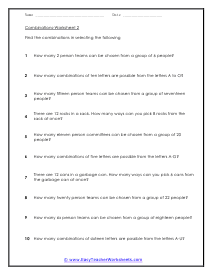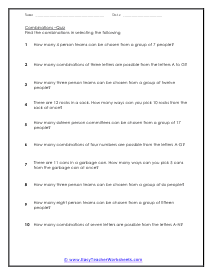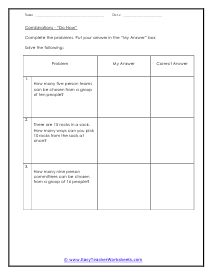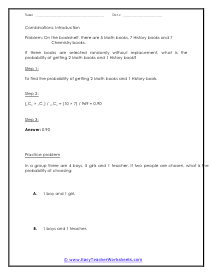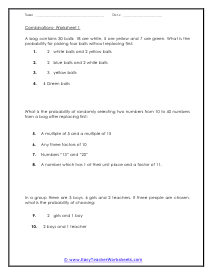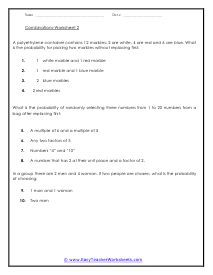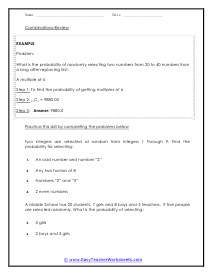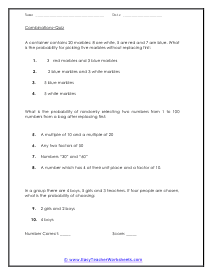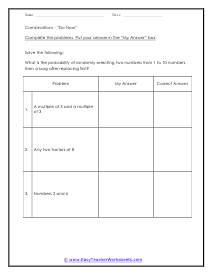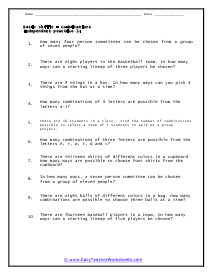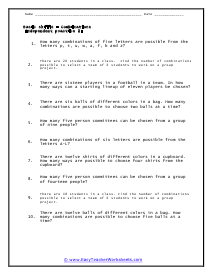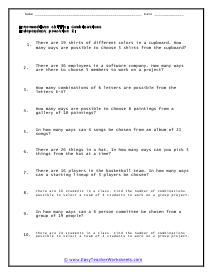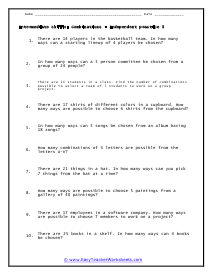A combination is comprised of each of the different groups or selections which can be formed by taking some or all of a number of objects. In many situations, many different combinations are possible that will satisfy the situation. We use combination formula to find probability after selecting more than one items. Combination is the ways of r items from a set of n and you will denote combination by nCr. nCr = n!/r! (n-r)!, n! = 1 × 2x ... x n, 0! = 1, 1! = 1. Problems based in combination probability - Example # 1 - We have 9 white and 6 black balls in a bag and here, you will find the probability of combination. Choices: 1) 2 white balls 2) 3 white balls. Solution: Combination formula is nCr = n!/r!(n-r)! Probability of event A is: P (A) = Number of favorable outcomes/ total number of outcomes. 1) Find the probability of selected 2 white balls. You will get the favorable cases after selecting 2 balls from 9 white balls. You will do it by 9 C2 ways. There are 15 balls by adding 9 and 6. You will get the number of outcomes by choosing 2 balls from 15 balls and you do this by 15 C2 ways. The required probability will be 9 C3/15 C3. 2) Find the probability of choosing 3 white balls. You will get favorable cases after choosing 3 balls from 9 white balls and you can do this by 9C3 ways. You will obtain the total number of results after selecting 4 balls from 15 balls and you can also do in 15 C3 ways. The needed probability is 9 C3 / 15 C3.
In these worksheets, your students will determine the number of combinations that are possible for a given situation. They will find combinations by selecting for specific information. This set of worksheets contains step-by-step solutions to sample problems, both simple and more complex problems, a review, and a quiz. It also includes ample worksheets for students to practice independently. Worksheets are provided at both the basic and intermediate skills levels. When finished with this set of worksheets, students will be able to both find and create combinations that meet specified criteria. These worksheets explain how to determine the number of combinations that are possible for a given situation. Sample problems are solved and practice problems are provided.









